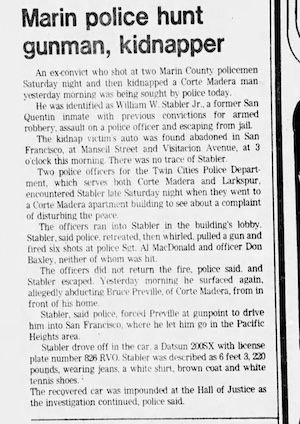Summary
In June 1997, the skeletal remains of an unidentified individual were discovered in a grassy area in the unincorporated community of Holopaw, which is located in St. Cloud, Florida. St. Cloud is a city in Osceola County that is situated on East Lake Tohopekaliga, south of Orlando. The remains were discovered by travelers who had stopped on the side of highway 192. The Osceola County Sheriff's Office responded to the scene. It was determined that the remains were that that of a male, who stood between 5’ 9” and 6’ 1” and weighed between 200 and 225 pounds. The man was between the ages of 50 and 70 years old at the time of his death.
At the time of the discovery of the man’s remains, the man was wearing size 12 Nike tennis shoes, size 40x32 beige pants, and a dark blue polo shirt. A handgun was also recovered with the remains, and investigators determined that the man died due to a self-inflicted gunshot wound. Details of the case were entered into the National Missing and Unidentified Persons System (NamUs) as UP534. Despite extensive efforts by law enforcement investigators to identify the man, no matches were found, and the case went cold due to a lack of viable leads. The man became known as Holopaw John Doe, named for the community in which his remains were discovered. 
In 2023, the Osceola County Sheriff's Office submitted forensic evidence to Othram in the Woodlands, Texas to determine if advanced DNA testing could help identify the man. Othram scientists successfully developed a DNA extract from the forensic evidence, and then used Forensic-Grade Genome Sequencing® to build a comprehensive genealogical profile for the man. Othram’s in-house forensic genetic genealogy team then used this profile to conduct genetic genealogy research, ultimately providing new investigative leads to law enforcement.
Using this new information, a follow-up investigation was conducted leading investigators to potential relatives of Holopaw John Doe. Reference DNA samples were collected from the potential relatives and compared to the DNA profile of the unknown man. This investigation led to the positive identification of the man, who is now known to be William Wallace Stabler Jr., born January 23, 1933.
Throughout the course of the investigation, it was learned that William Wallace Stabler Jr. was a career criminal. In April 1960, Stabler escaped from a prison camp in Weott, California where he was incarcerated after being convicted of first degree robbery; he had been transferred to the prison camp from San Quentin Prison. Months later, he was arrested and returned to Humboldt County for trial. During the 1970s, Stabler committed several robberies and was eventually apprehended after leading police on a high-speed chase, during which he shot at them with a rifle. For years following the chase with police, Stabler maintained a "pen pal" relationship with one of the police officers who had been shot during the incident. This correspondence continued until Stabler was paroled.
 Later in 1981, William Wallace Stabler Jr. fired at two police officers who were responding to a domestic violence call in Corte Madera, California, which is located in Marin County, north of San Francisco. To flee, Stabler forced a man at gunpoint to drive him out of San Francisco, then stole the man's car to continue his escape. As of the time of his identification in 2024, active warrants for Stabler's arrest were on file in Marin County, California.
Later in 1981, William Wallace Stabler Jr. fired at two police officers who were responding to a domestic violence call in Corte Madera, California, which is located in Marin County, north of San Francisco. To flee, Stabler forced a man at gunpoint to drive him out of San Francisco, then stole the man's car to continue his escape. As of the time of his identification in 2024, active warrants for Stabler's arrest were on file in Marin County, California.
Stabler was featured on the TV show “America’s Most Wanted” which garnered tips about his whereabouts, including information about him being in New York in 1991 or 1992, where he was seen shopping at a Banana Republic store with his Doberman Pinscher named Daisy. It was reported that he was working as a video game repairman. The last known photo of Stabler dates back to 1988, when he was arrested in Los Angeles under the alias "William Hudson." There have been no solid leads on Stabler's whereabouts for more than two decades.
The identification of William Wallace Stabler, Jr. represents the 25th case in the State of Florida where officials have publicly identified an individual using technology developed by Othram. Most recently in Winter Haven, Florida, Mack Lavell Proctor, who was murdered and found in a marshy area, was identified in May 2024.
